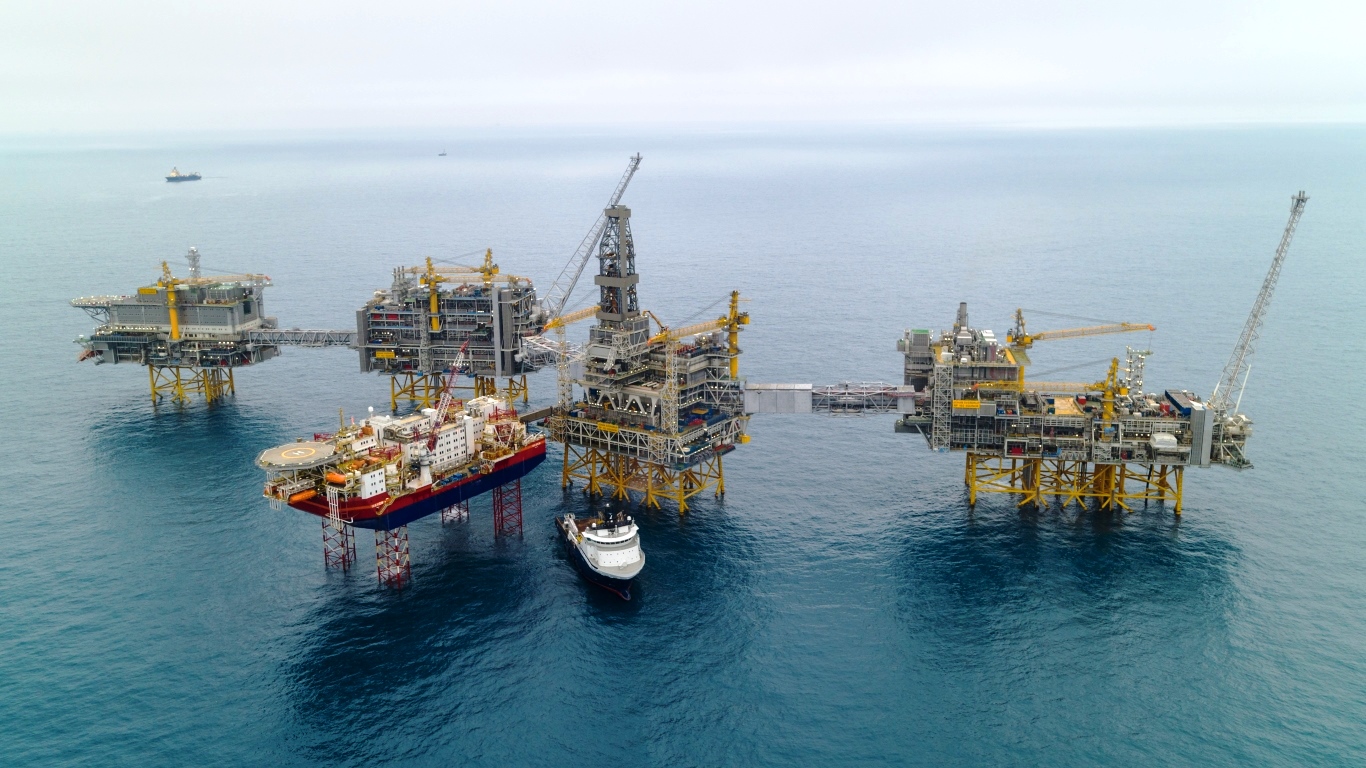
Norway’s state-controlled oil company, Equinor ASA (NYSE: EQNR), formerly known as Statoil, announced Thursday that it is committed to slashing its carbon intensity by 50% by 2050. Over the next decade, Equinor intends to eliminate carbon emissions resulting from the production of its energy products.
At the company level, carbon intensity refers to the amount of carbon emitted in the making of its products. For an oil supermajor like Equinor, that amount is vastly smaller than the emissions generated by the airlines, motorists and industrials operations that use its products.
Making a meaningful reduction in carbon intensity, such as the target that Equinor has just set, requires that companies include in their reductions the amount of carbon generated by consumers of the companies’ products. That sets a pretty high bar for oil and gas producers like Equinor, which now produces more than 2 million barrels of oil a day. The company’s new Johann Sverdrup field is expected to produce 400,000 barrels a day by midyear.
In its announcement, Equinor makes clear that reducing carbon intensity by 50% includes in the calculation the end-use of its products:
The ambition to reduce net carbon intensity by at least 50% by 2050 takes into account scope 1, 2 and 3 emissions, from initial production to final consumption. By 2050 each unit of energy produced will, on average, have less than half of the emissions compared to today. The ambition is expected to be met primarily through significant growth in renewables and changes in the scale and composition of the oil and gas portfolio. Operational efficiency, CCUS [carbon capture, use, and storage] and hydrogen will also be important, and recognised offset mechanisms and natural sinks may be used as a supplement.
“Scope 1, 2, and 3 emissions” refer to reductions in-line with the Paris Climate Agreement. Scope 1 reductions include direct emissions under a company’s control, such as power generation to support drilling and production of oil. Scope 2 covers indirect emissions, such as power purchased from a third party. Scope 3 includes all other indirect emissions created by sources not controlled by the company, such as airlines and consumers using jet fuel and gasoline refined from Equinor’s oil.
In December, Madrid-based Repsol announced that it planned to reduce its carbon emissions to net zero by 2050, including emissions created by consumers (Scope 3). The Spanish company produces about a third as much oil as Equinor, 715,000 barrels of oil equivalent a day, and is the only major oil company to take this step.
Royal Dutch Shell PLC (NYSE: RDS-A) has announced a plan that includes Scope 3 targets of reducing carbon intensity by 2% to 3% by 2021, by 20% by 2035 and by about 50% in 2050.
Next week, BP PLC (NYSE: BP) plans to announce its targets for reducing carbon emissions. Last May, BP shareholders approved a binding resolution requiring the company to develop a strategy consistent with the goals of the Paris Agreement. Following Equinor’s commitment, incoming CEO Bernard Looney may get the honor of putting his name on a BP plan that will almost certainly include at least some emissions in line with Scope 3 requirements.
U.S. supermajors Exxon Mobil Corp. (NYSE: XOM) and Chevron Corp. (NYSE: CVX) have set goals to reduce upstream emissions. Exxon says it will cut emissions by 10% in its oil sands operation by 2023, and Chevron has committed to a 5% to 10% reduction in carbon intensity in its oil operations by 2023 and reduction of 2% to 5% in natural gas production at the same time. These commitments are far short of the Scope 3 targets announced by Repsol, Shell and Equinor.
To help reach its goals, Equinor plans to raise its renewable energy capacity by 4 to 6 gigawatts by 2026 and by 12 to 16 gigawatts by 20135. The company had 2.8 gigawatts under development last year.
CEO Eldar Sætre added:
Equinor is engaged in building a European value chain, capturing and storing CO2 from third-party industrial sites. This, combined with a strong position within natural gas, makes Equinor prepared for future growth in hydrogen, which offers large scale opportunities for zero emission energy.
Equinor stock traded down about 3.7% at $17.91 in the early afternoon Wednesday. The stock’s 52-week range is $16.24 to $23.97, and the 12-month price target is $24.10. The company currently pays a dividend yield of 5.82%.
Are You Ahead, or Behind on Retirement? (sponsor)
If you’re one of the over 4 Million Americans set to retire this year, you may want to pay attention.
Finding a financial advisor who puts your interest first can be the difference between a rich retirement and barely getting by, and today it’s easier than ever. SmartAsset’s free tool matches you with up to three fiduciary financial advisors that serve your area in minutes. Each advisor has been carefully vetted, and must act in your best interests. Start your search now.
Don’t waste another minute; get started right here and help your retirement dreams become a retirement reality.
Thank you for reading! Have some feedback for us?
Contact the 24/7 Wall St. editorial team.
 24/7 Wall St.
24/7 Wall St.



